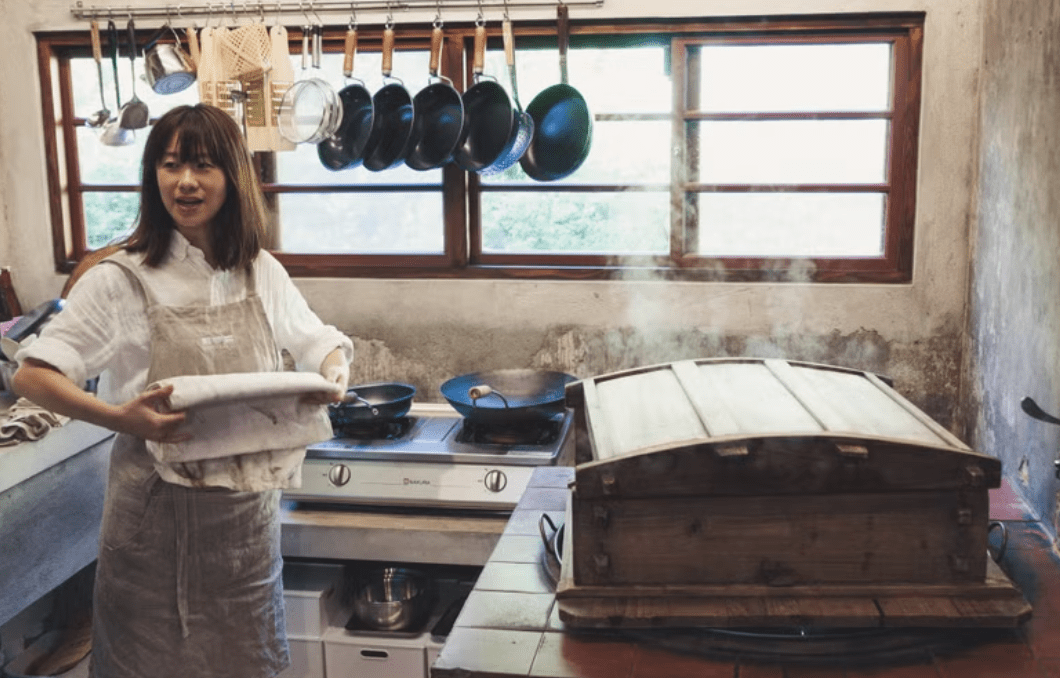Teng Wei and Pei Yi didn’t set out to preserve a piece of Taiwan’s cultural heritage. It began simply enough in 2014, during a three-month backpacking trip across Europe. Along the way, they met countless travelers, all curious about Taiwan, especially its food. When asked, “What food represents Taiwan?” Teng Wei’s answers were always the same: “beef noodles, [Lu Rou Fan] (滷肉飯), [Xiao Long Bao] (小籠包), bubble tea, [Oyster Omelette] (蚵仔煎).” The usual suspects.
But these encounters made them think. Pei Yi started to question the validity of their answers. “These dishes are popular, sure, but are they the ones we grew up with? The ones our families make during festivals?” It was a fair point. The foods that defined their childhood weren’t necessarily the ones that Taiwan was famous for abroad.
When they returned to Taiwan, they began exploring their culinary roots. They enrolled in cooking classes, focusing on the traditional dishes that had always been a part of their family’s celebrations. What they discovered was the central role that rice played in these foods. From festive cakes to everyday meals, rice was the foundation of much of Taiwan’s culinary culture—a fact often overlooked in favor of trendier dishes.
This realization led them back to their roots, quite literally, in their family’s [Sanheyuan] (三合院)—a traditional three-sided courtyard house. These structures were once common in Taiwan, but with urbanization, many had been torn down or left to decay. The [Sanheyuan] (三合院) where Teng Wei’s grandmother still lived held a wealth of memories, particularly the food she cooked in its old kitchen.
In 2017, while on their honeymoon in Myanmar, Teng Wei and Pei Yi took part in a local cooking class on Inle Lake. They were struck by how the instructors connected their cuisine to their culture and environment. It was a simple but profound experience that gave them an idea: to use their family’s [Sanheyuan] (三合院) as a space to promote Taiwan’s rice-based culinary heritage.
They approached Teng Wei’s grandmother with the idea, and she agreed without hesitation. But their plans hit a snag when a relative they didn’t know well—a younger uncle from Tainan—questioned their intentions. “How much are you willing to pay?” he asked, pointing out that developers were already eyeing the property. The couple quickly realized they were out of their depth. They couldn’t compete financially, and the land, tied up in a complicated web of ownership, was beyond their reach.
Undeterred, they started searching for an alternative location. It wasn’t easy. They looked at dozens of properties in rural Taoyuan, but finding a [Sanheyuan] (三合院) that was both available and in good condition was nearly impossible. Many had been divided among numerous heirs, making them nearly impossible to rent. Others were in such disrepair that they were unusable. After a year of searching, they finally found a site near the Daxi Interchange, where they could establish the [Shuangkou Lü Cultural Kitchen] (雙口呂文化廚房).
Now, the cultural kitchen serves as a hub for learning about Taiwan’s traditional rice dishes. Teng Wei and Pei Yi aren’t trying to romanticize the past; they’re simply trying to keep a piece of it alive. The [Sanheyuan] (三合院), the rice, and the traditional recipes they’ve inherited are all part of a cultural legacy that’s fading fast in modern Taiwan. Through their work, they hope to remind people of the value in these traditions before they disappear entirely.
雙口呂 Siang Kháu Lū
The name "Siang Kháu Lū" comes from the surname of Pei Yi’s grandmother, "Lü" (呂). Originally, her surname was "Liu" (劉), but local cultural practice often changes a woman's surname to her husband's paternal name after marriage, resulting in "Lü." The cofounders chose this surname for their brand to honor their grandmother.
"Siang Kháu Lū" (雙口呂) translates to "double mouth Lü." The surname "Lü" evokes the image of two ponds connected by a path, symbolizing the emotional connection to their family and hometown, Taoyuan. The name is pronounced using the local Taiwanese dialect.

The logo design features a stove door representing the craft of making kueh, a bowl symbolizing rice, and a book that tells the stories of kueh.
($)USD
(RM)MYR
(Rp)IDR
(¥)CNY
($)HKD
(₩)KRW
(₱)PHP
($)SGD
(฿)THB













